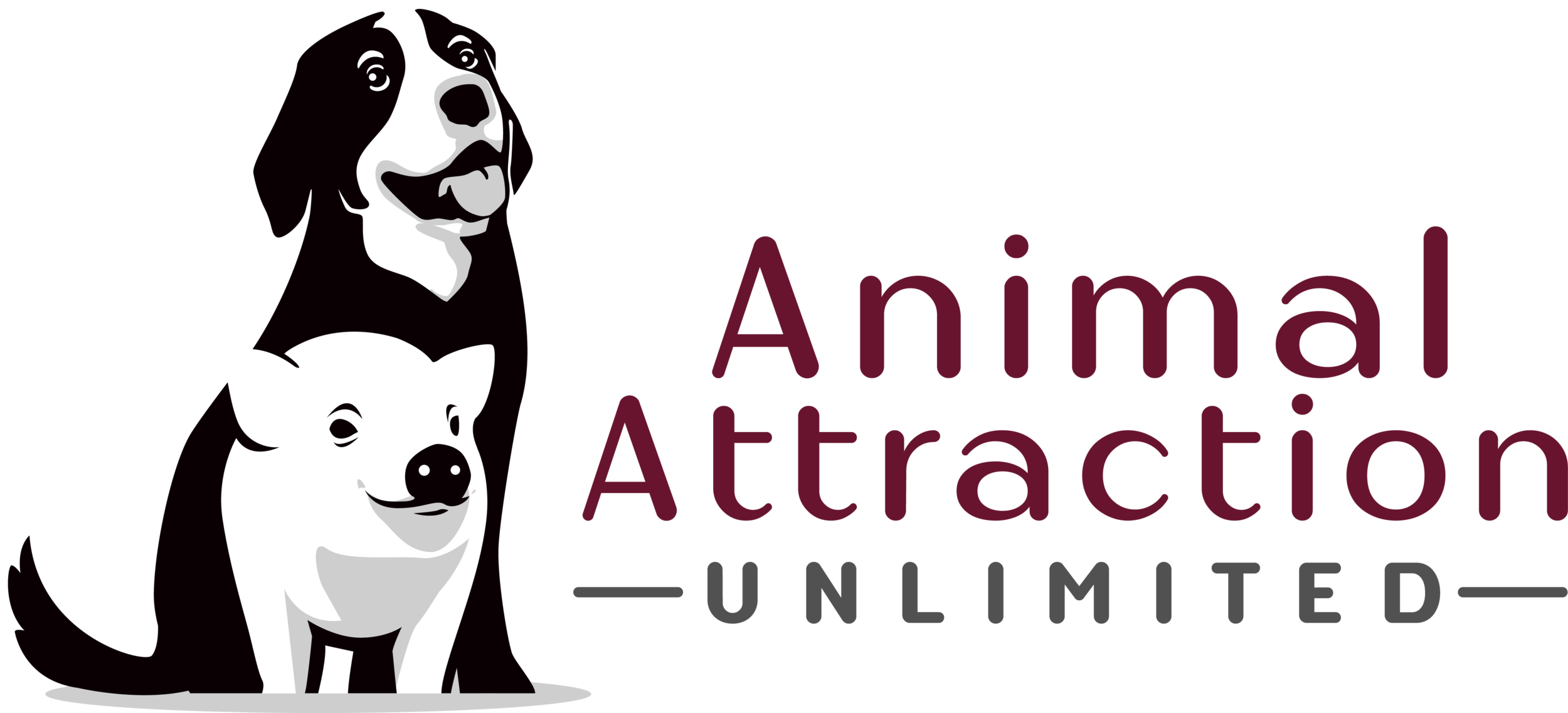Achieving Fluency in Dog Training Behaviors:
Mastering Latency, Speed, and Precision
Understanding Behavioral Fluency in Dogs
Behavioral fluency is the combination of accuracy and speed that allows a dog to perform behaviors reliably under various conditions. When a dog achieves fluency in a behavior, they respond promptly, precisely, and consistently regardless of distractions or environmental changes.
The Three Key Components of Fluency
1. Latency: Reducing Response Time
Latency refers to the time between your cue and your dog's response. A dog with low latency will begin the requested behavior almost immediately after hearing the command. As mentioned in our podcast about Real Life Training, incorporating training into daily activities helps reduce latency. When dogs practice behaviors throughout the day rather than just in dedicated training sessions, they develop faster responses.
Tips for Improving Latency:
Start in low-distraction environments and gradually increase difficulty
Use high-value rewards initially to create strong associations
Practice commands during everyday activities in multiple locations around the house, not just formal training sessions
Keep training sessions short but frequent to maintain engagement
Reward quick responses more generously than delayed ones
Have a “window of opportunity” where the response is reinforceable. Meaning that if your dog does not begin responding to the cue within 3 seconds, the behavior is not going to be reinforced if the dog offers it after that window has closed. I usually say “bummer” when the window has closed, then move on to something else.
2. Speed: Efficient Execution of Behaviors
Speed refers to how quickly your dog completes the behavior once they've begun. A dog might have low latency (starts quickly) but still perform the behavior slowly.
Tips for Improving Speed:
Use enthusiasm in your voice to encourage energetic responses
Reward faster performances more generously (see above regarding windows of opportunity)
Gradually raise your expectations for speed
Use play as reinforcement for quick behaviors. Meaning, if your dog completes a sit quickly, you throw the ball as soon as their bum hits the ground.
Practice behaviors in short bursts to maintain energy and focus
In our podcast about Impulse Control, we discussed how dogs can learn to control their behavior even when excited. This balance is crucial - we want dogs to respond quickly but still maintain control and precision.
3. Precision: Accuracy in Performance
Precision refers to how accurately your dog performs the behavior according to your criteria. For example, a precise "sit" means the dog sits squarely with their hindquarters firmly on the ground, not halfway up or leaning.
Tips for Improving Precision:
Define clear criteria for each behavior
Initially reward approximations, then gradually raise standards
Use a marker (clicker or verbal marker) to pinpoint the exact moment of correct performance
Be consistent with your expectations
Break complex behaviors into smaller components to perfect each element
During a training session, work on only one of these aspects at a time. As your dog improves with each of these pieces, start combining them in pairs. For example, work on latency and speed in your training sessions until they have that down pat. Then work on speed and precision together. Then work on precision and latency. Only after these pairs have been perfected can you begin requiring all three parts during a training session.
The Path to Fluency: A Progressive Approach
Phase 1: Acquisition
Focus on teaching the basic behavior with minimal distractions. During this phase, as mentioned in our Real Life Training discussion, it's important to concentrate fully on what you're doing.
Phase 2: Proficiency
Once your dog understands the behavior, work on improving all three elements (latency, speed, and precision) in controlled environments.
Phase 3: Generalization
Practice the behavior in different locations, with different distractions, and at varying distances from you. This helps the dog understand that the command means the same thing regardless of context.
Phase 4: Maintenance
Continue practicing periodically to maintain fluency. As discussed in our podcast about Setting Up for Success, consistency is key to maintaining trained behaviors.
Common Challenges to Fluency
Inconsistent Training
As emphasized in our podcast on Consistency, inconsistency in training makes it difficult for dogs to grasp what you want. Dogs don't naturally adopt our sensibilities; they learn through consistent patterns and reinforcement.
Inadequate Proofing
Many dogs perform well in training sessions but struggle in real-world situations. Gradually introducing distractions while maintaining your criteria is essential.
Reinforcement Schedules
Initially, continuous reinforcement helps establish behaviors. As fluency develops, transitioning to variable reinforcement schedules helps maintain behaviors without constant rewards.
Practical Applications of Fluent Behaviors
Fluent behaviors have real-world benefits beyond just looking impressive:
Safety: A dog who comes quickly when called could avoid dangerous situations
Reliability: Behaviors performed with consistency can be trusted in important situations
Reduced Stress: Clear communication reduces frustration for both dog and handler
Enhanced Relationship: The process of achieving fluency builds communication and trust
Conclusion
Achieving fluency in dog training behaviors requires patience, consistency, and a systematic approach. By focusing specifically on improving latency, speed, and precision, you can develop reliable behaviors that stand up to real-world challenges. Remember that fluency is a journey, not a destination - even well-trained behaviors benefit from ongoing maintenance and reinforcement. The most successful training incorporates these principles into everyday life, creating dogs who respond promptly, perform precisely, and maintain their training in any environment.
